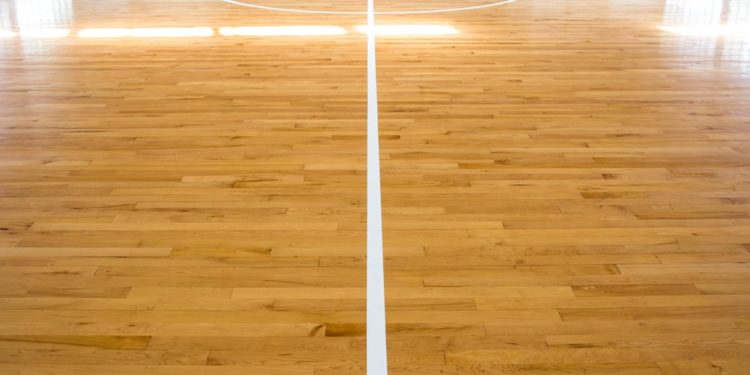“How heavy of a lift or other piece of equipment can I roll on flooring like our hardwood court?” This is a common question and the answer is not always cut and dry.
Before diving into an answer, it is important to point out that resilient hardwood floor systems are specifically designed to absorb the impact of the athletes playing on them. Introducing significant loads to a maple floor system without protection or for any length of time can jeopardize the integrity of the floor system and damage the surface finish.
What to Know Before You Roll on Flooring
Before putting any equipment into “Drive,” do your homework:
- Know the weights of the equipment.
- Know the combined weight of equipment, operator and load.
The “Scissor Lifts” Position Statement distributed by the Maple Flooring Manufacturers Association (MFMA) notes these two weights:
- 3,500 pounds: This is the maximum recommended weight of the equipment. For machines that weigh over 3,500 pounds, consult with your flooring manufacturer.
- 4,500 pounds: This is the maximum recommended combined weight of equipment, operator and load.
If heavy equipment must be driven out onto the maple court, what precautions should be taken to protect the hardwood floor?
Caution should be taken to ensure the floor is protected properly before introducing extreme rolling loads. To make sure the floor system and surface are properly protected, use this multi-layer approach:
- Lay something down that will protect the floor finish. Products such as red rosin paper or heavy painting tarps can be used. Be sure whatever you use will not slide as the rolling load is moved over it.
- Use two-layers of 0.75 inches thick, clean protective sheathing. Make sure to overlap the seams, as this will ensure the weight is distributed evenly over the sheathing. By rotating the sheets to the front of a moving load, the total number of sheets needed will be reduced.
Remember to travel across the short dimension of the flooring as much as possible, to ensure the weight of the rolling load is distributed across multiple pieces of flooring. Traveling with the flooring boards increases the risk the floor may become damaged.
One Final Tip
It should also be noted lifts or other heavy loads should not be left on the floors for long periods of time. As mentioned earlier, many subfloors are designed to protect the athletes playing on them by absorbing the energy they produce when moving, jumping and landing. The floor systems are not designed to support these types of excessive weight(s) for long periods of time. For this reason, DO NOT leave heavy loads on the floor overnight or for extended periods. This can lead to surface degradation and/or weaken structural components leading to system failure.
Now that you know what measures you need to take, go ahead and roll on flooring.
Jason Nieminski is the Technical Director at Aacer Flooring. He can be reached at jnieminski@aacerflooring.com or 715-582-1228.











Is 4’x4’ double 3/4” plywood sheets sufficient for the outriggers on a hardwood floor?
We are using a 3,700lb boom lift to install acoustic panels in the ceiling of a basketball gym and utilizing 4’x8’ doubled 3/4” plywood sheets to roll the lift around the floor.